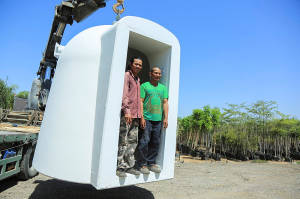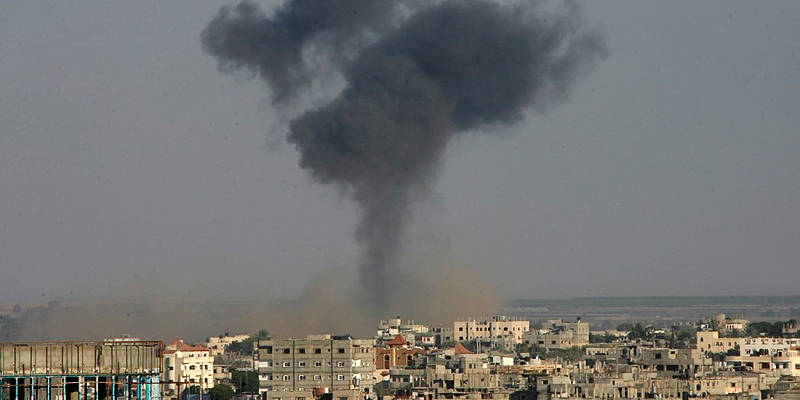Since the beginning of Operation Protective Edge, Israel has respected numerous ceasefires, most of them humanitarian lulls for the benefit of the residents of Gaza.
Israel had to act in Gaza in self-defense to hostilities initiated – and prolonged – by Hamas. In clear violation of international law, Hamas and the other terrorist organizations in Gaza fired approximately 3,500 rockets, indiscriminate weapons that target Israeli civilians. Tunnels dug from Gaza were used to carry out terror attacks inside Israeli territory since the beginning of Operation Protective Edge, Israel has respected numerous ceasefires. Most of these were humanitarian lulls for the benefit of the residents of Gaza.
Prior to the 10-13 August ceasefire, Hamas violated every ceasefire and humanitarian lull. Even a lull initiated by Hamas was promptly violated by the terrorists themselves.
Hamas also violated the 15 July ceasefire initiated by Egypt and supported by most of the international community, including the Arab League. Israel accepted this ceasefire. Had Hamas accepted it as well, Israel would not have had to start its ground operation and a full 90 percent of the fatalities in this conflict would have been avoided. This same ceasefire was accepted later by Hamas on 5 August.
Following is a chronology of Hamas’ violations of the ceasefires:
15 July: Israel accepted the ceasefire initiated by Egypt and stopped all fire at 09:00. However, terrorists fired more than 50 rockets at Israeli communities. Only after six hours of continuous rocket attacks did the IDF respond.

Thai foreign workers standing in a mobile bomb shelter at Moshav Beit HaGadi in southern Israel on Tuesday. (Photo: Edi Israel/Flash90)
17 July: Israel agreed to a five-hour humanitarian ceasefire. The terrorist organizations rejected it and fired rockets, including at the city of Be’er Sheva.
20 July: Israel approved a two-hour medical/humanitarian window in the area of Shejaiya, following an International Committee of the Red Cross (ICRC) request. Forty minutes after the ceasefire began, Hamas violated it. Nevertheless, Israel implemented the ceasefire, even extending it for two more hours.
26-27 July: Israel respected an UN-requested humanitarian ceasefire from 08:00-20:00 on Saturday, 26 July. Israel announced its readiness to prolong the ceasefire until midnight, but a few minutes after 20:00, Hamas renewed firing rockets at Israeli civilians.
On the same day (26 July), Hamas announced a 24-hour humanitarian ceasefire, at 14:00. Hamas violated its own ceasefire a short time later. Despite Hamas’ continuous fire, Israel decided to extend the humanitarian ceasefire a second time, from midnight Saturday to midnight Sunday.
28 July: Israel accepted Hamas’ request for a ceasefire in honor of the Muslim holiday of Eid al-Fitr. The IDF was instructed to cease military attacks, but Hamas continued to launch rockets at Israel.
30 July: Israel announced a temporary humanitarian ceasefire between 15:00-19:00. A few minutes after the ceasefire began Hamas fired rockets at the southern cities of Ashdod and Ashkelon, as well as other Israeli communities.
1 August: Israel accepted the UN/US proposal for a 72-hour humanitarian ceasefire beginning 8:00 Friday (1 August). Hamas violated the ceasefire an hour-and-a-half later when, at approximately 09:30, an attack was executed against IDF forces. Hamas terrorists, including a suicide attacker, fired at the IDF forces. During the attack, two IDF soldiers were killed by Hamas fire and Israel suspects that Second Lt. Hadar Goldin was kidnapped during the exchange of fire and dragged into a tunnel. (He was declared dead on 3 August based on forensic evidence found in the tunnel).
4 August: Israel authorized a seven-hour humanitarian window in Gaza, from 10:00-17:00. Hamas kept firing rockets throughout the lull.
5-8 August: Israel accepted the Egyptian proposed 72-hour ceasefire, beginning on Tuesday, 5 August at 08:00. Israel had already pulled out all its forces from the Gaza Strip. Prior to its expiration on 8 August, Israel notified Egypt that it accepted a 72-hour extension but the Palestinian delegation was not willing to renew the ceasefire. At approximately 04:30 on Friday, 8 August, two rockets fired from Gaza hit southern Israel, in violation of the ceasefire that was set to expire at 08:00. Terrorists increased the rocket fire immediately after 08:00, injuring a number of Israelis. Israel held its fire for hours, but eventually was forced to react.
10-13 August: A 72-hour ceasefire began at midnight between 10-11 August. Despite the firing of several rockets towards the end of the 72-hour ceasefire at midnight on Tuesday, 13 August, the ceasefire has been extended for five days, until midnight on Monday, 18 August.
Latest Violation: Rockets throughout South and Central Israel
19 August: Although the ceasefire was extended for an additional 24 hours, at about 3:30 pm, three rockets fired from Gaza hit Beersheva and Netivot, violating the ceasefire. In response, the IDF struck terrorist targets in Gaza. Throughout the rest of the day, a total of 50 rockets were fired from Gaza, striking throughout southern Israel, including a shopping center in the Ashkelon coast region, as well as in Tel Aviv and, shortly before midnight, the Jerusalem area.
Source: Ministry of Foreign Affairs
